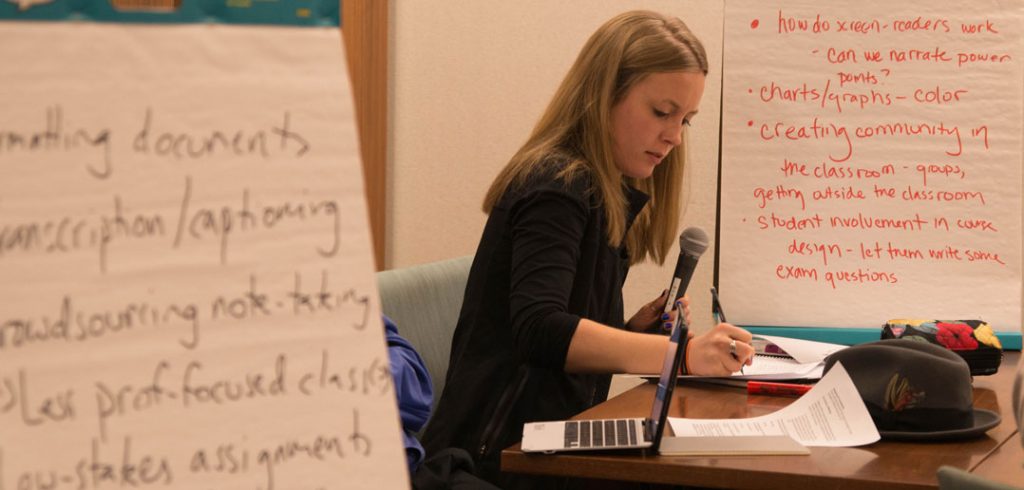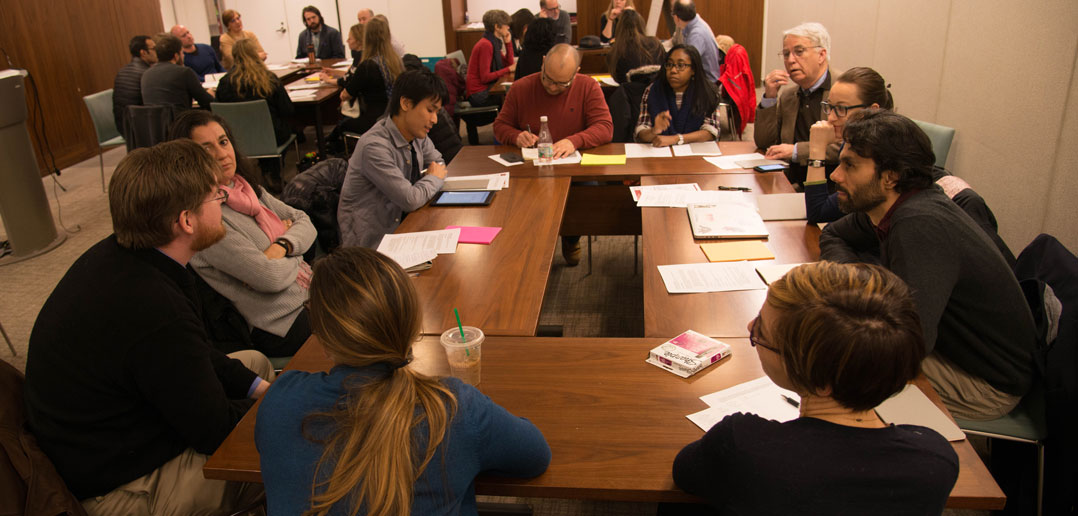How can Fordham faculty best serve the needs of each and every student who enrolls in their classes? At a recent workshop on the Rose Hill campus, faculty came together to share the best practices for increasing inclusivity and accessibility.
Anne Fernald, Ph.D., acting associate dean of the arts and sciences and professor of English and women’s studies, organized the Jan. 11 event to help Fordham faculty better address the curricular and instructional needs of students with disabilities such as hearing loss, blindness, learning disabilities, and psychological disorders.
“There is a lot that professors can learn from their students,” said Fernald, who believes that universal design learning techniques can transform pedagogy for today’s students.

“The goal is to help professors feel excited and comfortable about all of the different abilities and experiences that exist in their classrooms.”
Among the workshop’s attendees was Rafael Zapata, Fordham’s first chief diversity officer.
“There are so many ways that we can signal to students that who they are matters to us,” he said.
“As a community, we want to be supportive of them as much as possible to help them realize their potential.”
Creating an Access Statement
Rebecca Sanchez, Ph.D., an associate professor of English whose research focuses on transatlantic modernism, disability studies, and poetics, said one of the first steps educators can take to show students that they are invested in their success is to include an access statement in their syllabi.
The statement generally notes that there are different ways to access class materials, take exams, and participate in classroom activities.
“By creating your own access statement, you’re suggesting to disabled students that their arrival in your class does not constitute some kind of crisis for you, or is the first time you’ve thought about disability,” she said.
Showcasing Diverse Representations
Using an excerpt from Chimamanda Ngozi Adichie’s 2009 TED talk about the dangers of a single story, Alessia Valfredini, Ph.D., professor of modern language and literatures, encouraged attendees to be proactive and intentional about representations of ability and disability in their coursework. Whenever possible, coursework should showcase a variety of human experiences and perspectives.
“Our courses are a reflection of the world as we see it,” said Valfredini, who contributed via a transcribed video. “By presenting a certain type of class, we make a statement about who the legitimate actors in the work are.”
Using Technology

Lindsay Karp, a senior instructional technologist at the Lincoln Center campus, presented examples of how technology can take pedagogy to the next level. Her suggestions included making file names descriptive and specific, condensing URLs, using fonts and font sizes that are easier to read, and incorporating a table of contents in long text. She also suggested using subtitles and captions.
“Captions are not just fantastic for [students] who are hard of hearing, but also for foreign students who are learning the language,” she said.
Reinforcing Learning
Carla Romney, Ph.D., associate dean for STEM and pre-health education at Fordham College at Rose Hill, argued for presenting materials in multiple modes.
She makes her lectures available in a video format and uses YouTube to create closed captioning. Students then take turns editing the captions.
“Making [students] listen to the lessons twice and having them transcribe it is another means of reinforcing their learning,” she said.
Providing Options
Whether it be offering structured assignments or giving students an open-ended project, providing students with different variations of assignments may spark creativity and inspire them to take ownership of their work.
“Not everyone is interested in knowledge in the same way,” said Orit Avishai, Ph.D., assistant professor of anthropology. “People learn differently and have different kinds of preferences.”
Prioritizing Community Building
Creating opportunities for group work and community building can be especially transformative.
“Very often the people who are doing the work of supporting our students are other students in [our] courses,” said Badr Albanna, Ph.D., assistant professor of neurophysics.
“The more work you can do to make that possible, accessible, and easy for students to do, that can have a tremendous impact on all students, and particularly for students whose needs you may not be aware of.”



